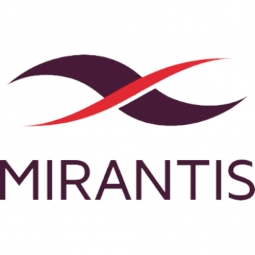下载PDF
Tata Communications’ OpenStack-based Managed Private Cloud Enables Digital Transformation of the Global Enterprise
技术
- 基础设施即服务 (IaaS) - 云计算
- 基础设施即服务 (IaaS) - 私有云
- 平台即服务 (PaaS) - 连接平台
适用行业
- 电信
- 金融与保险
适用功能
- 离散制造
- 物流运输
用例
- 预测性维护
- 车队管理
- 库存管理
服务
- 云规划/设计/实施服务
- 系统集成
挑战
Global organizations increasingly rely on technology to innovate and beat the competition. Business executives have an insatiable demand for SaaS applications and E-commerce teams depend on big data analytics. Finance and engineering require dynamically scaling systems and sales mandates mobile and secure access. New workloads, however, must integrate with legacy systems. Thus, IT needs solutions to connect old deployments with new ones, public with private, and physical with virtual. Furthermore, these integrations must not lead to a loss of control, such as systems use without IT oversight, which could result in increased security or compliance risk.
关于客户
Tata Communications is a global company with headquarters in India and Singapore. It has a workforce of 8,000 employees spread across 38 countries. The company is a leading provider of network, data center, and managed services. Its Tier 1 global network provides enterprises with data, voice, and video services over a 700,000 km fiber and IP network that forms 24 percent of global Internet routes. Tata Communications also offers comprehensive managed data center services, providing a million square feet of space in over 50 locations. The company's OpenStack-based managed IZO™ Private Cloud is the cornerstone of its enterprise IT transformation services, offering strong infrastructure flexibility and systems control.
解决方案
Tata Communications decided to build their managed IZO™ Private Cloud on OpenStack. For the global IT orchestration framework, Tata Communications built a solution featuring a single pane of glass connected to ITSM systems to provision, monitor and manage resources while maintaining compliance. For cloud connectivity, customers would use an MPLS or VPN solution over its Tier 1 network. Tata Communications selected Mirantis over others for OpenStack cloud design, development, and support services because of its strong team and consultative approach compared to others with product-centric and more prescriptive approaches. The company’s cloud team worked closely with Mirantis experts on the design and custom integrations.
运营影响
数量效益
相关案例.

Case Study
Real-time In-vehicle Monitoring
The telematic solution provides this vital premium-adjusting information. The solution also helps detect and deter vehicle or trailer theft – as soon as a theft occurs, monitoring personnel can alert the appropriate authorities, providing an exact location.“With more and more insurance companies and major fleet operators interested in monitoring driver behaviour on the grounds of road safety, efficient logistics and costs, the market for this type of device and associated e-business services is growing rapidly within Italy and the rest of Europe,” says Franco.“The insurance companies are especially interested in the pay-per-use and pay-as-you-drive applications while other organisations employ the technology for road user charging.”“One million vehicles in Italy currently carry such devices and forecasts indicate that the European market will increase tenfold by 2014.However, for our technology to work effectively, we needed a highly reliable wireless data network to carry the information between the vehicles and monitoring stations.”

Case Study
Vodafone Hosted On AWS
Vodafone found that traffic for the applications peak during the four-month period when the international cricket season is at its height in Australia. During the 2011/2012 cricket season, 700,000 consumers downloaded the Cricket Live Australia application. Vodafone needed to be able to meet customer demand, but didn’t want to invest in additional resources that would be underutilized during cricket’s off-season.

Case Study
SKT, Construction of Smart Office Environment
SK T-Tower is the headquarters of SK Telecom. Inside the building, different types of mobile devices, such as laptops, smartphones and tablets, are in use, and with the increase in WLAN traffic and the use of quality multimedia data, the volume of wireless data sees an explosive growth. Users want limitless Internet access in various places in addition to designated areas.








